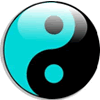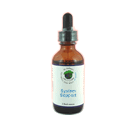 |
Parasympathetic Nerve Support Remedy
Sympathetic and parasympathetic divisions typically function in opposition to each other. This natural opposition is better understood as complementary in nature rather than antagonistic. For an analogy, one may think of the sympathetic division as the accelerator and the parasympathetic division as the brake. Sympathetic and parasympathetic divisions typically function in opposition to each other. This natural opposition is better understood as complementary in nature rather than antagonistic. For an analogy, one may think of the sympathetic division as the accelerator and the parasympathetic division as the brake. When active, the Parasympathetic system:
Acetylcholine (ACh) is the neurotransmitter at all the pre- and many of the postganglionic neurons of the parasympathetic system. However, some of the postganglionic neurons release nitric oxide (NO) as their neurotransmitter. The vagus nerves also help keep inflammation under control. Inflammation stimulates nearby sensory neurons of the vagus. When these nerve impulses reach the medulla oblongata, they are relayed back along motor fibers to the inflamed area. The acetylcholine from the motor neurons suppresses the release of inflammatory cytokines, e.g., tumor necrosis factor (TNF), from macrophages in the inflamed tissue. Health Conditions
Suggestions To Strengthen Although the autonomic nervous system is considered to be involuntary, this is not entirely true. A certain amount of conscious control can be exerted over it which has long been demonstrated by practitioners of Yoga and Zen. During their periods of meditation, these people are clearly able to alter a number of autonomic functions including heart rate and the rate of oxygen consumption. These changes are not simply a reflection of decreased physical activity because they exceed the amount of change occurring during sleep or hypnosis. Take time to play and laugh as hard as you work. Get good rest, enough sleep and consider some form of meditation (yoga, tai chi, chi qong) several times a week that quiets the mind and gets you out of Sympathetic response and back into Parasympathetic "relax and renew". |
|



